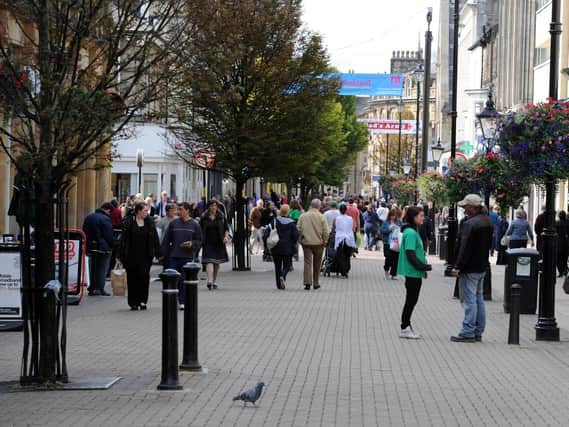Harrogate council leader aims to protect communities during boundary review


The independent Local Government Boundary Commission has announced that it has recommended the council should have 40 borough councillors at the 2018 council elections, down from 54.
The announcement comes as the Commission aims to draw up new ward boundaries across the borough as part of their ongoing electoral review.
Advertisement
Hide AdAdvertisement
Hide AdIn drawing up new boundaries, the Commission is aiming to deliver electoral equality for voters in council elections so that each councillor represents roughly the same number of voters.
Professor Colin Mellors Chair of the Commission said he hoped the review would ensure new council wards would reflect the interest and identities of communities across Harrogate.
He said: "We are asking local people and organisations to help us draw up new wards for Harrogate. As we develop the recommendations, we will take into account local community identities as well as ensuring electoral equality for voters.
"If you have a view about which communities or neighbourhoods should be part of the same council ward, then we want to hear from you.
Advertisement
Hide AdAdvertisement
Hide Ad"And if you think a road, river or railway makes for a strong boundary between communities in your part of Harrogate, then this consultation is for you.
"Alternatively, if you’re simply interested in the way the borough is run, just log on to our website to explore our interactive maps and have your say.
In areas which are also undergoing potential boundary changes, such as Birmingham, residents have reacted angrily at the prospect of having their long-established communities divided.
However, leader of Harrogate Borough Council, Coun Richard Cooper said that, while he was in favour of reviewing the boundary lines, his focus was on minimising disruption for communities.
Advertisement
Hide AdAdvertisement
Hide AdHe said: "We have to have this view as the boundary commission is mandated by Government. We've no choice on this but we do have a choice on the number of councillors we have.
"When we look at other areas like Leeds or Kirklees, there is one council ward representing about five or six thousand people, but our council wards represent about four-and-a-half thousand.
"The 40 figure was one debated at council and recommended to the Commission as we needed to make sure each ward had the same number of electors and the same geography.
"I have got no fixed ideas about where the boundary lines should be drawn but I have got fixed principles about not dividing communities, especially in rural and defined areas such as Knaresborough and Ripon."
Advertisement
Hide AdAdvertisement
Hide AdCoun Cooper added that he did not believe the changes would impact on residents' ability to contact an elected councillor but said he welcomed feedback to the proposals.
During the next stage of the review, the Commission will consider evidence provided by residents who will then have a further chance for consultation after draft recommendations are published in June.
Residents have until April 4 to submit their views. Further information on the review and interactive maps of the existing wards can be found at www.consultation.lgbce.org.uk and www.lgbce.org.uk.